Posted by Elena del Valle on October 9, 2015

WalletHub’s Most & Last Ethno-Racially Diverse Cities
Image: WalleHub
It is no secret that the face of America is changing. Immigration, native births and mixed ethnicity marriages may be among the factors leading to a growing racial and cultural blending across the country.
Since 2011, more than half of children born in the United States have been part of ethnic or racial minorities; and by 2020, the total minority population may grow to 40.7 percent from 30.9 percent in 2000, according to the U.S. Census Bureau.
To get a glimpse of the situation today, Richie Bernardo, personal finance writer, WalletHub, and the folks at his personal finance website researched the topic and consulted 12 academics (six men and six women). With their help he identified what could be the “most ethno-racially and linguistically diverse landscapes.” He compared 313 of the most populated cities nationwide with three criteria in mind: diversity by racial and ethnicity, language and United States region of birth and produced 2015’s Most & Least Ethno-Racially Diverse Cities, a short report.
The report concluded that four of the 10 most diverse cities are in Maryland, and two are in California. They are: Gaithersburg, Maryland; Jersey City, New Jersey; Germantown, Maryland; New York, New York; Oakland, California; Spring Valley, Nevada; San Jose, California; Silver Spring, Maryland; Renton, Washington; and Rockville, Maryland.
At the bottom of the list two of the bottom ten are in Wisconsin. They are: Birmingham, Alabama; Sioux Falls, South Dakota; O’Fallon, Missouri; Eau Claire, Wisconsin; Duluth, Minnesota; Warwick, Rhode Island; Parma, Ohio; Oshkosh, Wisconsin; and Livonia, Michigan.
Interesting findings include that although Laredo, Texas has the highest concentration of Hispanics, 95.2 percent, the racial and ethnic diversity of Oakland, California is four times higher than in Laredo. Mount Pleasant, South Carolina, has the highest concentration of whites, 90.6 percent. Detroit has the highest concentration of blacks, 79.1 percent. Miami has the highest concentration of Spanish speakers, 69.4 percent; and Honolulu has the highest concentration of Asian- and Pacific Islander-language speakers, 32.6 percent.
Posted by Elena del Valle on September 2, 2015

Ronald A. Lacayo, executive director, UTH Florida University
Photo: UTH Florida University
Targeting Spanish dominant immigrants from Central and South America looking to improve their economic prospects by completing their education with a college degree or obtain a second degree online in Spanish the Universidad Tecnologica de Honduras (UTH) is branching out. In August 2015, the owners of the Central American university and the Honduran-USA Chamber of Commerce announced the launch of UTH Florida University online.
Headquartered in Miami, Florida, UTH Florida University, a for profit entity, announced student registration in August 2015 and the beginning of classes September 1, 2015 at uthflorida.us. According to a press release distributed by UTH Florida University, the educational company is licensed by the Florida Commission for Independent Education. The Commission website indicates its functions include the licensure of independent schools, colleges and universities. All classes will be in Spanish and based on the Harvard Business School case method.
“We believe that on-line education is the disruptive innovation of the 21st century that will break the higher education paradigm and finally bring affordable and high quality education to everyone and everywhere thus allowing our communities and countries to grow and prosper,” said Ronald A. Lacayo, executive director, UTH Florida University.
Administrators plan to offer 16 classes in the Fall 2015 semester and 32 for Spring 2016 with the support of 10 staff. They expect the offerings to increase each semester.
“We expect 250 students enrolled by the end of 2016 and 500 by 2018,” said Lacayo by email. “Currently all of 80 faculty members are adjunct. Our staffing strategy is to seek maximum operating efficiency in order to pass along the savings to our students is the form of low and affordable tuition.”
The new company hopes to set itself apart from other distance educational institutions by offering students affordable undergraduate degrees for $9,600 in Business, Marketing and Human Resource Management. Graduate degrees in Management and International Business Administration, Business and Finance, and Business and Marketing will cost $5,880. According to the press release, the Universidad Tecnologica de Honduras which was founded in 1986 and has over 15,000 students.
Posted by Elena del Valle on August 5, 2015

Mexico Culture & Pride
Photo: Mexico Culture & Pride
Adriana Pavon, a Mexican entrepreneur and fashion consultant, plans to catch the attention of people who support fair trade and are socially conscious and intelligent consumers with Mexico Culture & Pride, an initiative to help preserve Mexican culture by showcasing quality accessories designed in collaboration with indigenous groups. She hopes it will be funded by a Kickstarter campaign.
It is scheduled to kick off in 2016 with an Oaxacan region exhibit titled “Through Frida’s Eyes” to showcase the importance of Mexican history and the work of traditional and contemporary artists through a variety of forms. Organizers plan to offer attendees the opportunity to experience Mexican culture through photography, video, dance, gastronomy and mixology.
“The idea of the project is to work in collaboration with various indigenous cultures,” Pavon said by email. “We started in Mexico because that’s my place of origin and I selected Oaxaca Mexico because it’s where Frida Kahlo was from. The next exhibit will visit other regions of Mexico eventually reaching out to other countries.”
The campaign should launch in Los Angeles, Chicago, Detroit, Grand Rapids, New York City and Mexico City on dates to be determined based on the support received from public donations. In exchange for contributions, the campaign will offer a reward of its selection. The money raised is meant to cover the cost of the logistics and a small stipend for the volunteers. The exhibit will be a compilation of one hundred items, including traditional wardrobe, video clips, 10 of a contemporary collaboration, and fifty images of the traditions and customs of the region.
All reward items are made with Mexican labor and materials, Pavon explained. The exhibit pieces will be mostly made in Mexico with the exception of the contemporary collection that may contain some French laces and United States materials.
The team behind the project is composed of individuals “who are passionate about their work and have extensive experience in their field.” They have clients such as Project Runway Latin America, Mexico’s Next Top Model, and Chrysler, and vast experience in manufacturing top brands, according to promotional materials. As part of the project, they will produce ten high end garments to be showcased in the traveling exhibit along with a collection of accessories in collaboration with regional artists.
Posted by Elena del Valle on June 17, 2015
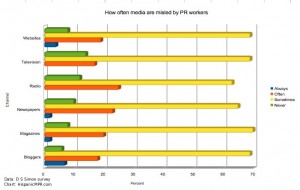
Survey: How often PR workers mislead media – click to enlarge
A recent report from a digital media and blogger placement company indicates that the relationship between public relations workers and media is poor. According to The Media Influencers Report of digital journalists, 90 percent of digital journalist respondents said they have been misled by public relations workers. Almost a quarter of them said such behavior happens often.
On average three out of four respondents said they use third party video. The highest percent among media channels, perhaps not surprisingly, was television where 93 percent of respondents said they use video provided by a third party. At the same time, when it came to video provided by public relations practitioners respondents indicated proper disclosure of content was a concern.
Twitter and Facebook top the list of social networks journalist respondents said they rely on for story ideas. Other sites that follow, they said, are LinkedIn, YouTube and Instagram.
The Media Influencers Report, the result of an online survey via Survey Monkey of 300 reporters and producers at TV, radio, newspaper, magazine, web media and bloggers, was recently released by D S Simon.
Posted by Elena del Valle on June 4, 2015
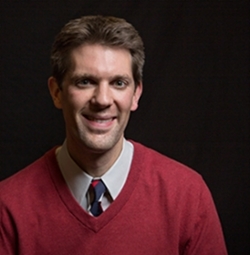
Temple Northup, Ph.D., assistant professor, University of Houston
Photo: University of Houston
Two academics who studied the effects of media in the United States and Austria believe longterm exposure to news may influence racial bias. The results of their three studies were recently published in a 20-page article titled Effects of Long-Term Exposure to News Stereotypes on Implicit and Explicit Attitudes in the International Journal of Communication.
Temple Northup, assistant professor at the University of Houston’s Jack J. Valenti School of Communication, conducted the United States portion of the study while Florian Arendt at the University of Munich in Germany conducted the research in Austria. The study in the United States focused on possible bias toward African-Americans while the two studies in Austria addressed possible bias against foreigners. The researchers believe the influence of television news was likely greater than print news among study participants.
“The two countries were selected due to access of available data for a comparable news stereotype that exists in both countries,” said Northup in a press release. “In the U.S., a large body of research indicates crime is overrepresented on local television news relative to the actual amount of crime that actually occurs in a community. Previous content analyses conducted by researchers at the University of Michigan and the University of California, Santa Barbara have shown that that African-Americans are overrepresented as criminals on local television news when compared to their actual crime rates. In Austria, research has suggested foreigners are overrepresented as criminals in tabloid-style daily newspapers.”
In the first study in the United States 316 participants completed the Implicit Association Test (IAT), a controversial tool used in psychology to measure hidden bias people may have but are unwilling or unable to report. After completing the IAT, participants answered a question about their explicit (conscious) attitudes towards African-Americans, as well as how many hours of local television news they watch per day.
“The two countries were selected due to access of available data for a comparable news stereotype that exists in both countries,” said Northup. “In the U.S., a large body of research indicates crime is overrepresented on local television news relative to the actual amount of crime that actually occurs in a community. Previous content analyses conducted by researchers at the University of Michigan and the University of California, Santa Barbara have shown that that African-Americans are overrepresented as criminals on local television news when compared to their actual crime rates. In Austria, research has suggested foreigners are overrepresented as criminals in tabloid-style daily newspapers.”
There were 489 participants in the first Austria study for which researchers used the same data procedure. Respondents reported how many days per week they read the specific newspaper under investigation. The researchers concluded that exposure to the tabloid-style daily newspaper did not increase the negativity of implicit attitudes. There were 470 participants in the second Austria study. The academics concluded that reading content specifically about crime had a significant effect on implicit attitudes toward foreigners among respondents who said they often read crime articles.
While stereotyping, prejudice, and discrimination are found across the world the impact of media on consumers remains to be clearly defined. The researchers concluded more studies are necessary to better understand the issues “before an earnest attempt to reduce these negative outcomes can be undertaken.”
Posted by Elena del Valle on April 22, 2015
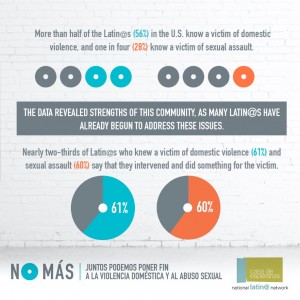
Click to enlarge
Image: No More
According to No More 12.7 million people are physically abused, raped or stalked in one year. Believing there is a strong and compelling need to better understand how these issues impact Latinos, and that Casa de Esperanza is the leading Latino organization in the country dealing with the issues of domestic violence and sexual assault, No More and Casa de Esperanza National Latino Network approached the Avon Foundation for Women to fund a survey on the subject.
Although they declined to disclose the cost, they believe it is the largest and most comprehensive study of domestic violence and sexual assault in the United States Latino community. The results were released this week in the No Mas Study: Domestic Violence and Sexual Assault in the U.S. Latino Community.
More than half of the Latino respondents, (56 percent) said they know a victim of domestic violence and 28 percent said they know a victim of sexual assault. Among survey takers, 41 percent said they believe that fear of deportation is the main barrier preventing Latino victims from seeking help; 39 percent said they thought the fear of more violence and 39 percent said they thought the fear of children being taken away were the top barriers for victims.
According to the survey, parents who responded are much more likely than parents in the United States population at large to talk to their children about domestic violence and sexual assault. More than half (54 percent) of respondents said they have talked to their children, while only 29 percent of parents in the population at large responding to a 2013 No More study said they had talked to their children about those issues.
The survey results have led the organizations to conclude Latino respondents were addressing domestic violence and sexual assault issues since 61 percent of them who said they knew a victim of either also said they intervened and did something for the victim. Lake Research Partners designed and administered a telephone survey of 800 adult Latinos nationwide conducted between January 27 and February 10, 2015. Among those surveyed 30 percent were interviewed in Spanish. The margin of error for the total sample is +/- 3.5 percent.
National Latino Network for Healthy Families and Communities is a project of Casa de Esperanza, a national institute on domestic violence in Latino communities. Casa de Esperanza has worked for 30 years to mobilize Latino communy to end domestic violence. According to the No More website, No More it is a collaboration of many groups working through a fiscal sponsor, the Joyful Heart Foundation, a registered 501c3. The organization’s goald is to raise awareness nationally and bring people, organizations and advocates together “to help gradually shift perceptions, normalize conversations and engage bystanders to take action to prevent and ultimately end domestic violence and sexual assault.”
The Avon Foundation for Women is one of the world’s largest corporate-affiliated philanthropy organizations “focused on issues that matter most to women.” Through 2014, Avon global philanthropy, led by the Avon Foundation, has contributed nearly $1 billion in over 50 countries. Today, Avon philanthropy focuses on funding breast cancer research and advancing access to quality care through the Avon Breast Cancer Crusade, and efforts to reduce domestic and gender violence through its Speak Out Against Domestic Violence program.
Posted by Elena del Valle on December 23, 2014

As the year draws to a close and a new one approaches we take the opportunity to thank you for your loyal following, your emails and Tweets, comments, ideas and suggestions, and working with us to make our content interesting and relevant. May you and yours have a joy filled holiday season and a happy, healthy and prosperous 2015!
Posted by Elena del Valle on September 30, 2014
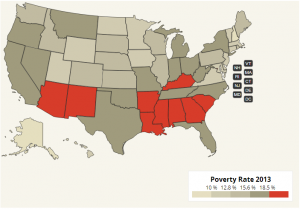
Talkpoverty Map – click to enlarge
Map: TalkPoverty.org
Rising stocks lifted household wealth 1.7 percent, according to the Federal Reserve, to $81.5 trillion between April and June of this year (see Household Net Worth Has Rebounded, The New York Times September 19, 2014 and Americans’ net worth climbs to record high, Associated Press, September 18, 2014). The numbers don’t account for inflation. They were adjusted for the change in the Consumer Price Index.
Household wealth reached a record high, 4 percent above the 2007 figures. The improvement in household wealth is especially evident among the wealthiest households. While the net worth of some Americans reached a record high poverty remains elevated, and there was an increase in new debt, mostly from auto and student loans.
Using data released by the U.S. Census Bureau, TalkPoverty.org, a project of the Center for American Progress’s Half in Ten Education Fund, recently released an interactive state by state map with congressional district level poverty data for 2013 designed to showcase the impact of poverty across the nation. It can be found at http://talkpoverty.org/poverty/
The tool relies on seven key indicators: the total poverty rate; the women in poverty rate; the child poverty rate; and the poverty rate among African Americans, Asian Americans, Native Americans, and Latinos. It also includes a ranking of states’ total poverty rates and child poverty rates.

Greg Kaufmann, editor, Talkpoverty.org
“We haven’t made nearly enough progress to reduce poverty nationwide, and both low- and middle-income families are still struggling to recover from the Great Recession,” said Greg Kaufmann, editor of TalkPoverty.org and senior fellow with the Half in Ten Education Fund, in a press release. “At the state and local levels, we see the disparate impact of poverty, particularly among women and communities of color. The latest round of Census data sheds light on the reality of poverty in our own backyards, and should be a wake-up call to policymakers that we can and must do more to drastically reduce poverty.”
The Center for American Progress suggestions to reduce poverty, boost economic security, and expand the middle class include raising the minimum wage; increasing the Earned Income Tax Credit, or EITC, for childless workers; supporting equal pay; providing paid leave and paid sick days; investing in affordable, high-quality child care and early education; and expanding Medicaid.
Launched in May 2014, TalkPoverty.org is an online hub dedicated to “providing in-depth analysis and educational resources about poverty in America and what we can do at the local, state, and federal level to dramatically reduce it.”
Posted by Elena del Valle on September 24, 2014

Rintaro Tamaki, deputy secretary general, OECD
Photo, graphic: OECD/Michael Dean
Most major advanced and emerging economies are experiencing a moderate if uneven expansion across regions; and growth is weak in the euro area, which may suffer prolonged stagnation unless something happens to boost demand, according to the Organisation for Economic Co-operation and Development’s (OECD) most recent Interim Economic Assessment.
In the United States, the United Kingdom and Canada, the researchers believe growth will be cause unemployment to drop. In Japan, where unemployment is already low, the economy may grow broadly. They believe China will to continue experiencing high yet more sustainable growth rates while India and Brazil rebound from the recession.
“The global economy is expanding unevenly, and at only a moderate rate,” said Rintaro Tamaki, deputy secretary general and acting chief economist, OECD, at the Interim Economic Assessment in Paris, France, according to the OECD website. “Trade growth therefore remains sluggish and labour market conditions in the main advanced economies are improving only gradually, with far too many people still unable to find good jobs worldwide. The continued failure to generate strong, balanced and inclusive growth underlines the urgency of undertaking ambitious reforms.”
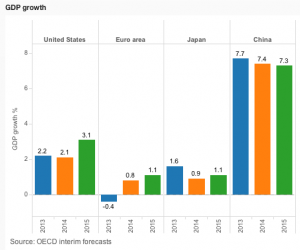
OECD Projected GDP Growth 2014-15 – click to enlarge
The OECD projects that in 2014, the United States will grow by 2.1 percent, and by 3.1 per cent in 2015; the United Kingdom will grow by 3.1 percent in 2014 and 2.8 percent in 2015; and Canada will grow 2.3 percent this year and 2.7 percent in 2015.
They estimate Japan will grow by 0.9 percent in 2014 and 1.1 percent in 2015; the euro area will grow at a 0.8 percent rate in 2014 and a 1.1 percent pace in 2015.
Growth prospects differ widely among the major euro area economies. The researchers forecast Germany will grow by 1.5 percent in 2014 and 2015, France by 0.4 percent in 2014 and 1 percent in 2015, while Italy will see a -0.4 percent drop in 2014 and a gain of just 0.1 percent in 2015.
Posted by Elena del Valle on August 13, 2014
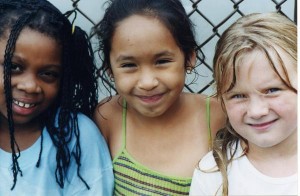
Photo: U.S. Census Bureau, Public Information Office (PIO)
Unsure about your race or ethnicity? You’re not alone. Almost 10 million (9.8 million) people varied their ethnicity responses between the 2000 and the 2010 censuses. That represents 6 percent of the population of 168 million who changed their minds about their identity between the two national demographic surveys, according to Preliminary Results from America’s Churning Races: Race and Ethnic Response Changes Between Census 2000 and the 2010 Census.
The shift may be explained at least in part due to questionnaire design changes, the report indicates. Analysts observed a race response change among American Indians, Alaska Natives, Native Hawaiians and Other Pacific Islanders, people who reported multiple races, and Hispanics who reported a race. The researchers found little variation among single race non Hispanic whites, blacks, and Asians.
“Compared to adults, children and adolescents may be more likely to change their race/Hispanic responses for two reasons: childhood and adolescence are times of personal identity development and young people’s information was probably reported by their parents in 2000 but may be self-reported in 2010,” researchers said.
The most common change in responses was from Some Other Race (SOR) to single race white among those who identified (or were identified by someone in the household) as Hispanic in both the 2000 and the 2010 censuses. The second most common response change was from single race white to SOR for those who reported (or were reported as) Hispanic in the two censuses.
Specifically, 710,019 respondents changed from white to Hispanic white, and 417,855 changed from Hispanic white to white between one census and the next, according to an Associated Press article (10 million switched ethnicity or race ID on census forms by Jesse J. Holland). Races in the Census are white; black or African American; American Indian or Alaska Native; Asian; Native Hawaiian or Other Pacific Islander; and other for those with more than one race. In addition, there is a Hispanic ethnic category. The article also pointed to people who were children and or living in the West when the 2000 Census took place as the most likely to have modified their responses between the government surveys.
The paper was authored by Sonya Rastogi, PhD, Senior Researcher, Center for Administrative Records Research and Applications (CARRA), Carolyn Liebler, PhD, Assistant Professor of Sociology, University of Minnesota, Leticia Fernandez, PhD, Researcher, CARRA, and James Noon, Researcher, CARR.






















